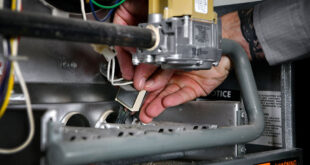To recognize a psychopath can be a tricky thing to do. First of all, we need a little bit of terminology history to clear up any potential confusions about what “sociopath,” “psychopath,” and other words mean. During the early 1800s, doctors dealing with mental patients noticed that some of them who appear normal had “moral depravity”, or “moral insanity.” This means that they had no usual sense of ethics or of rights other people have. The term of “psychopathy” for these people appeared around the year 1900. In the 1930s, it was changed to “sociopath” in order to emphasize the damage these people are capable to do to the society around them. Current researchers have are again using the word “psychopath” to diagnose such a person. Some experts also use that term to refer to some more serious disorder cases, connected with genetic traits. These individuals are more dangerous. The term “sociopath” refers to less dangerous persons who are products of their environments and their respective upbringing. Some of the other researchers call for a clear distinction between “primary psychopaths” who have genetically caused issues, and “secondary psychopaths” who are the aforementioned products of various environments.
Currently, the approach to defining someone as a sociopath and the related concepts is using a certain criteria list. In 1941, Harvey Cleckley developed first of these lists. He is the first person who investigated psychopaths by using modern research techniques in his work. Anyone fits enough of the criteria counts as either a psychopath or a sociopath. Different lists are used today, with the most common one being the Psychopathy Checklist-Revised, or PCL-R. Lilienfeld and Andrews developed alternative versions of it in 1996, called the Psychopathic Personality Inventory, or PPI. Psychologists and psychiatrists use a book to categorize and diagnose mental illness, called the Diagnostic and Statistical Manual of Mental Disorders, or DSM for short. It includes a category for “antisocial personality disorder” (APD). The World Health Organization has a similar category, called “dissocial personality disorder.” By a rough estimate, only one in five people with APD is diagnosed as being a psychopath.
If one were to compare the lists of different criteria, the core set of traits to recognize a psychopath contains the following nine entries:

How to recognize a psychopath:
1. Uncaring
The PCL describes the psychopaths as callous people who are showing a lack of empathy. The PPI describes them as having the trait of “cold-heartedness.” Some of the criteria for dissocial personality disorder also include a “callous unconcern for the feelings of others.” Different pieces of evidence point to biological causes of the uncaring nature of some psychopath. For normal people, caring is an action-driven mostly by different emotions. Psychopaths have a weak connection between the components of the emotional systems of their brains. All of these disconnects are therefore the ones responsible for the lack and inability to feel deep emotions. They are also not particularly good at detecting fear on the faces of other people, according to Blair et al., 2004. Another thing is the emotion of disgust, which plays an important role in the ethical sense within humans. General people tend to think of certain types of unethical actions as disgusting and/or unacceptable. This, in turn, keeps us from engaging in these activities and makes us express and show clear disapproval of them while finding it strange when people do them. However, psychopaths have an extremely high level of tolerance when it comes to disgust, which can be measured by the reactions they show when they look at disgusting photos of mutilated faces, as well as when exposed to bad odors.
One new piece of research that is very promising is based on a recent discovery of a brain network, which is responsible for understanding the minds of other people. It is called the default mode network, as it also performs other tasks in the brain while operating for the most part of our day when we are awake. This new network contains a cluster of several different areas in the cortex of the brain. The first studies were done on the function of this network in psychopaths. They note “aberrant functional connectivity” among the parts of the network, as well as reduced volume in some crucial areas.
2. Shallow Emotions
Psychopaths and some sociopaths also tend to show a big lack of emotions, especially those of social types like shame, guilt, or embarrassment. Cleckley says how psychopaths he studied showed “general poverty in major affective reactions,” as well as a “lack of remorse or shame.” The PCL describes them as “emotionally shallow” without a normal sense of guilt. Furthermore, these people are notorious and infamous for their lack of fear. In comparison, when normal people are put into an experimental situation where they expect something painful is to come like a mild electric shock or a mildly aversive pressure to a limb, their brain network activates. We also show a clear skin response in the form of sweat gland activity. When psychopaths are concerned, their brain network shows absolutely no activity, while also no skin conductance responses seem to appear.

3. Irresponsibility
Cleckley also notes that psychopaths show a degree of unreliability, while the PCL mentions “irresponsibility.” The PPI describes this as their “blame externalization,” meaning that they blame others for the things that are obviously their own fault. However, they might admit their blame if and when they are forced into a corner, although these admissions are produced by a normal sense of shame or remorse. This also does not in mean in any way their future behavior will change.
4. Insincere Speech
The PCL describes this as “glibness” and “superficial charm,” while Cleckley says it is “untruthfulness” and “insincerity,” and “pathological liar.” Among psychopaths, there is a trend towards devaluing speech by inflating changing it for some selfish ends and means. The criteria include “conning others for personal profit or pleasure.” Cleckley states the experience of one concerned father in his book, “I can’t understand the girl, no matter how hard I try. It is not that she seems bad or exactly what she means to do wrong. She can lie with the straightest face, and after she’s found in the most outlandish lies she still seems perfectly easy in her own mind.” This questionable use of words might be connected to what some experts and researchers call “a shallow sense of word meaning.” These people do not show differential brain responses between emotional terms and neutral terms like normal people do. In addition, they have a lot of trouble understanding abstract words and metaphors.
5. Overconfidence
The PCL describes the sociopaths as having a “grandiose sense of self-worth.” Cleckley speaks about this extensively in his works. There was an imprisoned sociopath who believed himself to be one of the best swimmers in the world.
6. Narrowing of Attention
One of the core things psychopaths miss, according to Newman and his colleagues, is the failure of response modulation. When regular people engage in some kind of a task, we can alter our activity and modulate our responses depending on the relevant information after starting the task. Psychopaths lack this ability greatly, which explains their impulsivity. Impulsivity shows up in various lists of criteria, as do different problems with passive avoidance and processing emotions.
Ideally, top-down attention is under voluntary control, while bottom-up attention takes place involuntarily. However, bottom-up attention can also temporarily capture top-down attention, like when periphery movement attracts our full attention. During a task, psychopaths have a problem with using top-down attention to accommodate information, which activates bottom-up attention. All of this happens completely automatically in other people. For example, when a hunter is scanning the woods for a deer, a rabbit hopping into the periphery vision area attracts much attention. The Stroop Task is the standard test to determine this. A subject has to read color words, which are printed in different color ink, as for example the word “red” printed in blue ink. According to some studies, psychopaths perform better in these type of tests than regular people.

7. Selfishness
Cleckley mentions about the psychopaths he examined that they showed “pathologic egocentricity [and incapacity for love],” which the PPI also includes as one of its criteria. The PCL mentions a “parasitic lifestyle” when this trait is in question.
8. Inability to Plan for the Future
The psychopaths Cleckley worked with showed a “failure to follow any life plan.” The PCL says that they have a “lack of realistic long-term goals,” and the PPI states they show a “carefree nonplanness.”
9. Violence
This criterion includes “very low tolerance to frustration and a low threshold for discharge of aggression, including violence.” When it comes to an antisocial personality disorder, the criteria is irritability and aggressiveness, like repeated physical fights or assaults committed by psychopaths.
People who can be valuable here are philosophers, in the sense that they can discern the consequences of all the findings. Many important questions need to be answered, like:
What does the possibility of a psychopath being a product of genetics say about human nature?
What steps could be taken to “correct” psychopaths, and are they ethical?
If psychopaths have damaged or abnormal brains, are they responsible for their actions?
Are there different degrees of psychopathy, so that some normal people may have some of these traits?
In conclusion, different sources and studies agree that these nine traits are common for recognizing a psychopath. More research is required in order to properly help and treat these people and offer them a normal life.
 Vermont Republic Second Vermont Republic
Vermont Republic Second Vermont Republic




